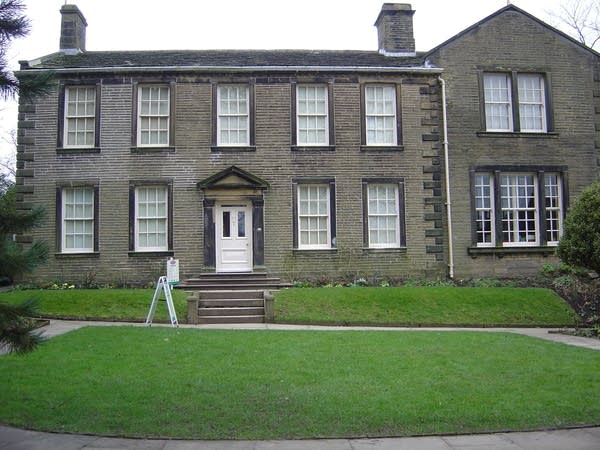Literary mysteries: Did Charlotte Bronte poison her sisters?

Go Deeper.
Create an account or log in to save stories.
Like this?
Thanks for liking this story! We have added it to a list of your favorite stories.
Could the minds behind "Jane Eyre" and "Wuthering Heights" have been tangled up in a murder mystery?
True crime writer James Tully thinks so. He takes on the Bronte sisters in his book, "The Crimes of Charlotte Bronte." His theory plays out in a swirl of sibling rivalry, jealousy, greed and betrayal.

The literary sisters — Charlotte, Emily and Anne — grew up with their father and brother at the Haworth Parsonage in Yorkshire, England. The family was no stranger to death. Their mother had died of cancer the year after Anne was born, and the oldest two Bronte sisters, Maria and Elizabeth, died of tuberculosis three years after that.
In the parsonage, death was impossible to escape: The windows looked out on the church graveyard. The view likely influenced the sisters' classic, haunting novels.
Turn Up Your Support
MPR News helps you turn down the noise and build shared understanding. Turn up your support for this public resource and keep trusted journalism accessible to all.
They entertained themselves by penning poetry and short stories, a pastime that developed into booming literary careers. They originally published their works under the male pseudonyms of Currer, Ellis and Acton Bell — "C" for Charlotte, "E" for Emily, "A" for Anne.
The trouble began, Tully claims, when Arthur Bell Nicholls arrived at the parsonage in 1845 to serve as an assistant to the Brontes' father. Tully saddles Nicholls with the title of villain: He claims that Nicholls seduced Charlotte and turned her against her siblings.
Within four years of Nicholls' arrival, Emily, Anne and their brother Branwell were dead. They died within 10 months of each other; none was older than 31.
Historians believe it was tuberculosis. Tully claims it was poison.
According to Tully, Nicholls enlisted Charlotte's help to eliminate her siblings and then convinced her to marry him. The two wed in 1854, against her father's objections.
Charlotte died less than a year later — and that's no coincidence, Tully claims. Charlotte was Nicholls' final victim. His plan was now complete: He was the sole heir to the sisters' fortunes.
While Tully's story has plenty of intrigue, it may be short on proof. "The Crimes of Charlotte Bronte" was released as a novel, after publishers rejected a nonfiction draft.
Tully mixes fact and fiction throughout: He references the sisters' letters and historical records, but presents the story through the eyes of the family's maid. The result is an intriguing, if not entirely convincing tale.
The siblings' early deaths may have not been a mystery at all, and simply a reality of the times. Sam Jordison, a writer for The Guardian, notes that "in the first half of the 19th century the average life expectancy in Haworth was 25.8."
And that neighboring graveyard? At one point, Jordison said, it was so full with fresh bodies that it poisoned the local water supply, "in turn creating more bodies."
Curious readers can visit the parsonage and see for themselves — the home has since been converted into the Bronte Parsonage Museum. Many of the family's possessions are still in the home.
Perhaps there's a clue?
Do you have a literary mystery you've always wondered about?
Ask us now or catch us on Twitter @thethreadmpr.


